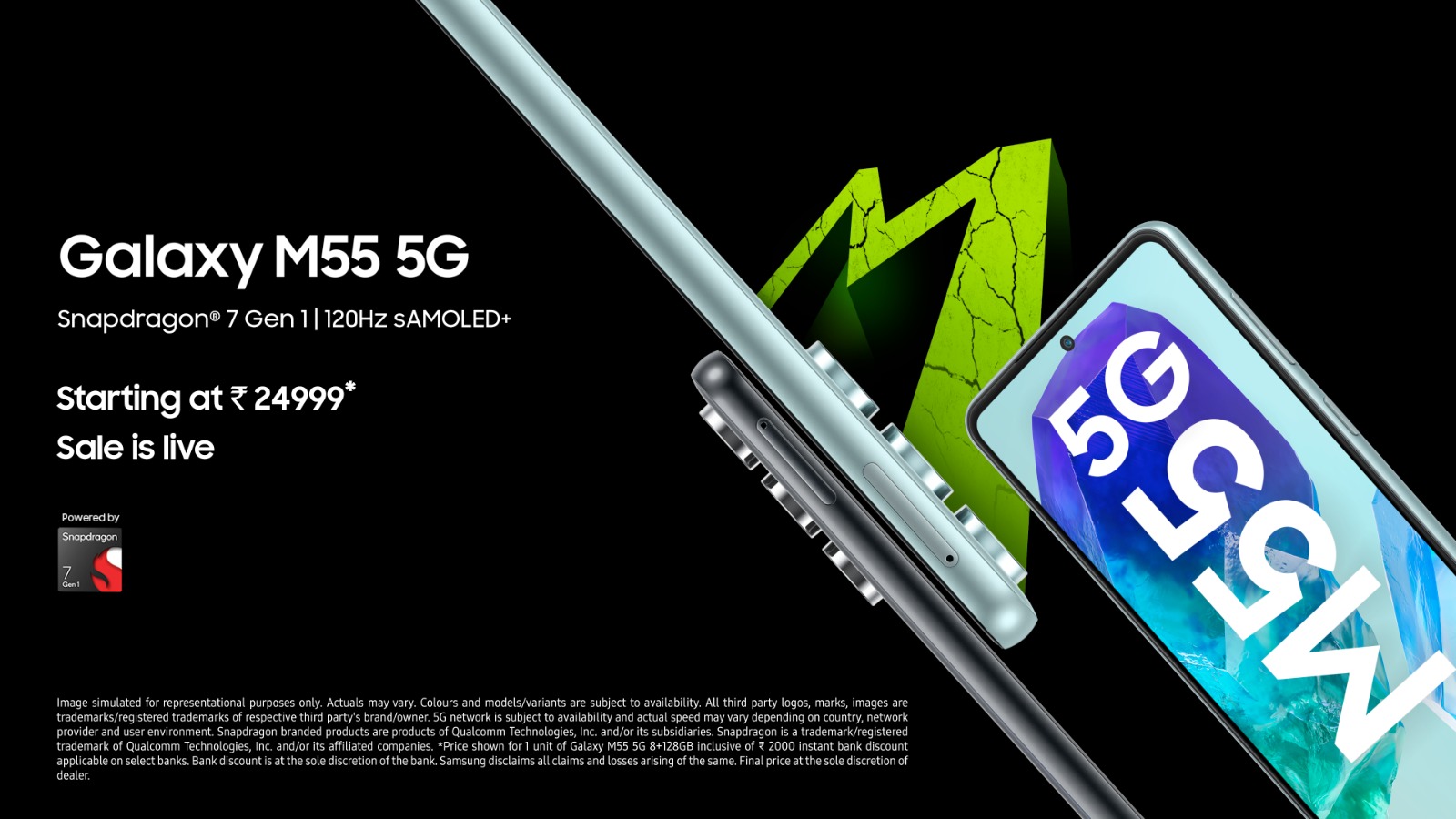Samsung has launched two new smartphones, the Galaxy M55 5G and the Galaxy M15 5G. This new addition to the Galaxy M series promises to offer users a superior smartphone experience with several industry-leading features.
According to Samsung, both phones come with a Super AMOLED Plus display, monster battery, and powerful processors. Additionally, these phones sport a sleek and elegant design that exudes sophistication.
The Galaxy M55 5G and Galaxy M15 5G are powered by 4nm-based Qualcomm Snapdragon 7 Gen1 and MediaTek Dimensity 6100+ processors, respectively. The Galaxy M55 5G boasts a 5000 mAh battery with 45W super-fast charging. In comparison, the Galaxy M15 5G has a segment-best 6000 mAh battery that can power the smartphone for up to two days.
The Galaxy M55 5G features a 6.7″ Full HD+ Super AMOLED Plus display with a 120Hz refresh rate. The Galaxy M15 5G boasts a segment-best 6.5″ Super AMOLED display. Both phones have high brightness modes and Vision Booster technology, ensuring users enjoy their favourite content even under bright sunlight.
The Galaxy M55 5G has a 50MP (OIS) No-Shake Camera. The Galaxy M15 5G sports a 50MP triple camera setup with Video Digital Image Stabilization (VDIS). Both phones have AI-enhanced features such as Image Clipper and Object Eraser.
Samsung has also integrated several security features on both phones, including best-in-class defence-grade Knox Security and Samsung Knox Vault. This hardware-based security system offers comprehensive protection against hardware and software attacks.
The Galaxy M55 5G and Galaxy M15 5G come in different storage variants. Samsung has committed to providing four generations of OS upgrades and five years of security updates, ensuring users can enjoy the latest features and enhanced security for years.
The Galaxy M55 5G will be available in two refreshing colours – Light Green and Denim Black, while the Galaxy M15 5G will be available in three stylish colours, including Celestial Blue, Stone Grey, and Blue Topaz. The Galaxy M55 5G will be available on Amazon, Samsung.com, and at select retail stores, while the Galaxy M15 5G will be available on Amazon and at select retail stores starting today, April 8.
| Product | Variants | Price | Offers | Net Effective Price | ||
| Galaxy M55 5G | 8GB+128GB | INR 26999 | Amazon / Samsung.com : INR 2000 Instant Discount on all Bank Cards Retail Stores : INR 2000 Instant Discount on HDFC Bank Cards or INR 2000 off on exchange |
INR 24999 | ||
| 8GB+256GB | INR 29999 | INR 27999 | ||||
| 12GB+256GB | INR 32999 | INR 30999 | ||||
| Galaxy M15 5G | 4GB+128GB | INR 12999 | INR 1000 Instant Discount on HDFC Bank Cards or INR 1000 off on exchange | INR 11999 | ||
| 6GB+128GB | INR 14499 | INR 13499 |
